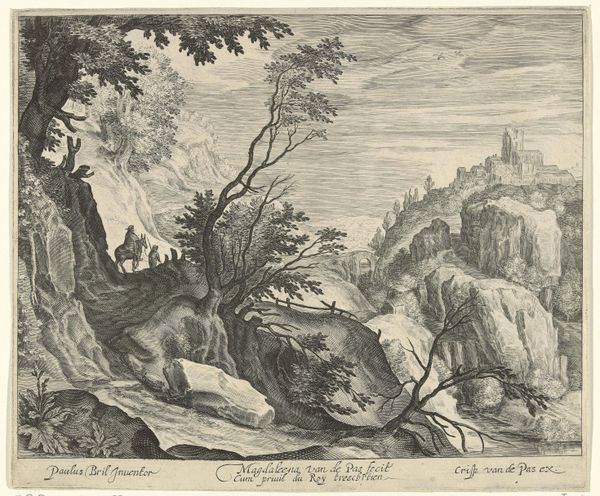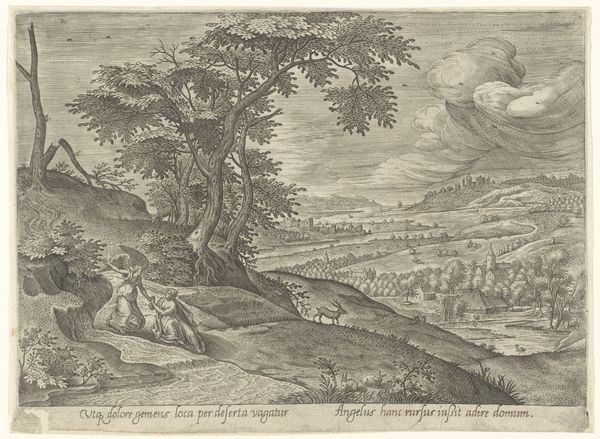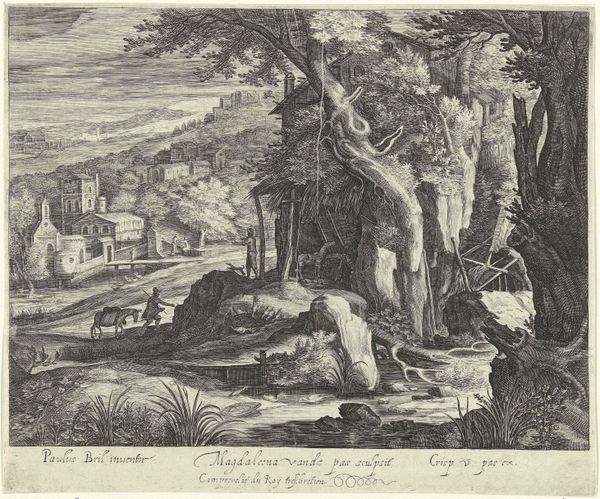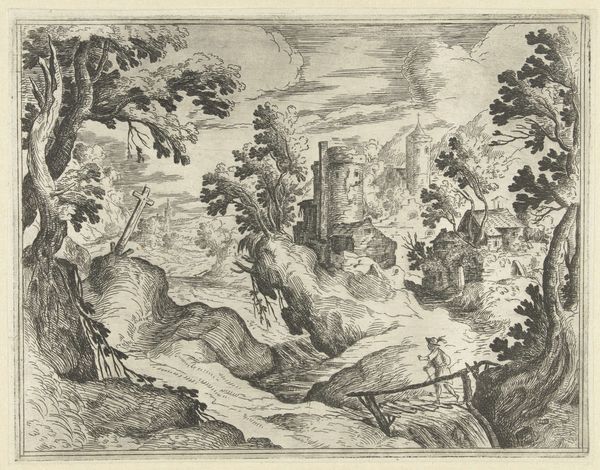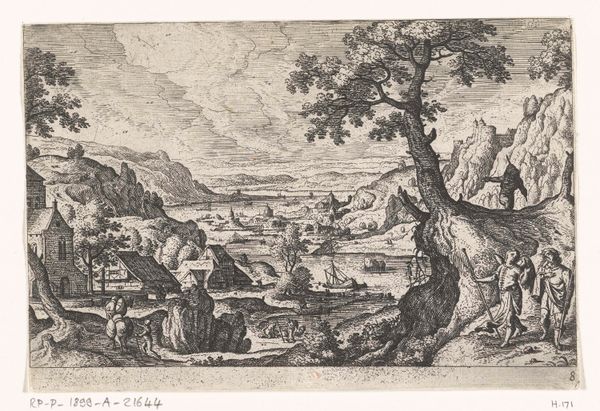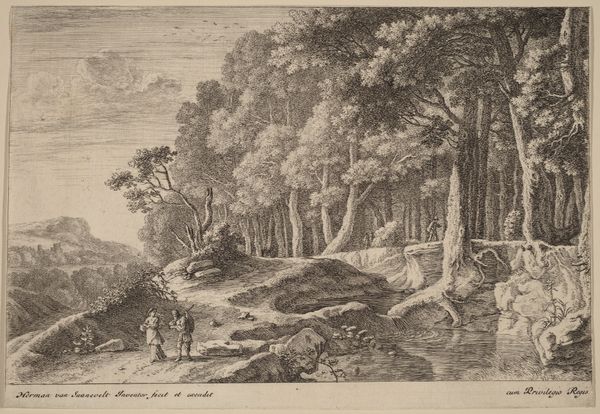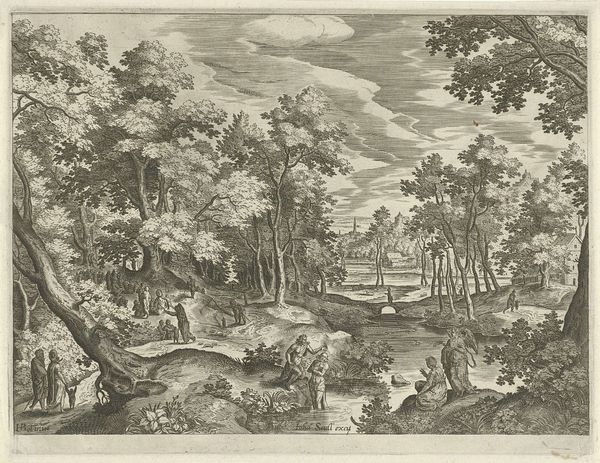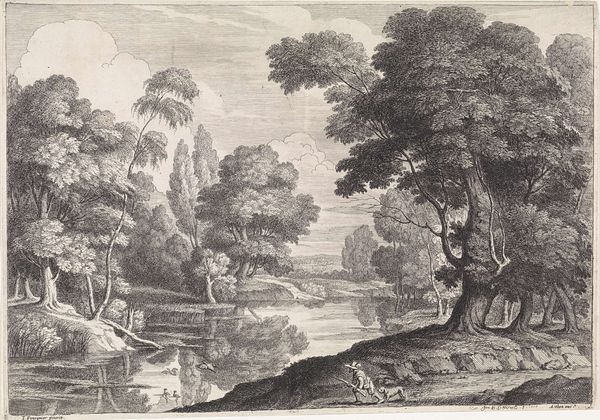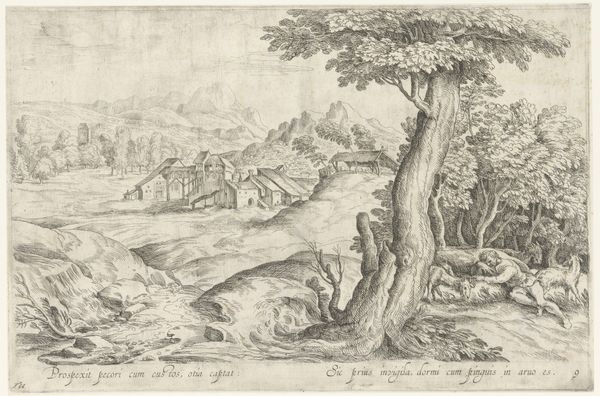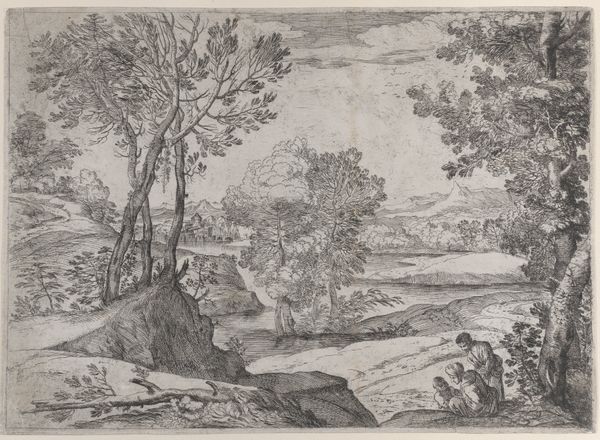
print, engraving
#
baroque
# print
#
old engraving style
#
landscape
#
forest
#
engraving
Dimensions: height 207 mm, height 261 mm
Copyright: Rijks Museum: Open Domain
Editor: We’re looking at “Elia rust uit op een rots langs de beek Kerit” a print made sometime between 1617 and 1634 by Magdalena van de Passe. It’s an engraving, currently housed at the Rijksmuseum. The incredible detail is what struck me first. What formal qualities do you observe? Curator: The image is fundamentally organized by contrasting planes of light and dark, almost creating distinct zones. Note the density of line work in the foreground versus the comparative openness of the distant landscape. This is no mere depiction, but a calculated exercise in graphic articulation. How do you read the relationship between these contrasting areas? Editor: I guess it brings focus to the middle-ground with Elijah. The lines making up the bridge are angled differently than the cliffs or the water to draw my eye to that plane, between light and dark. Do you notice the details of how it’s engraved? Curator: Precisely. Consider, for example, the hatching techniques van de Passe employs. Observe how parallel lines, cross-hatching, and stippling create variations in tone and texture. Note too, the lines follow the forms; they are denser in the shadows, lighter on the highlights. In the foliage, she varies line weight and direction to simulate the depth and complexity of organic matter. It’s not simply mimicry but interpretation. Are we to take that such a high degree of skill affects the feeling of the image? Editor: It's like each plane has its own unique feeling and creates visual space, with so many little deliberate marks. I'd say the varying patterns in the foliage adds to that feel of life and depth. I appreciate how analyzing technique really transforms my understanding. Curator: Indeed, through the materiality of the medium, the artwork offers its own reading and allows us a glimpse of 17th century formal artistic concerns.
Comments
No comments
Be the first to comment and join the conversation on the ultimate creative platform.
